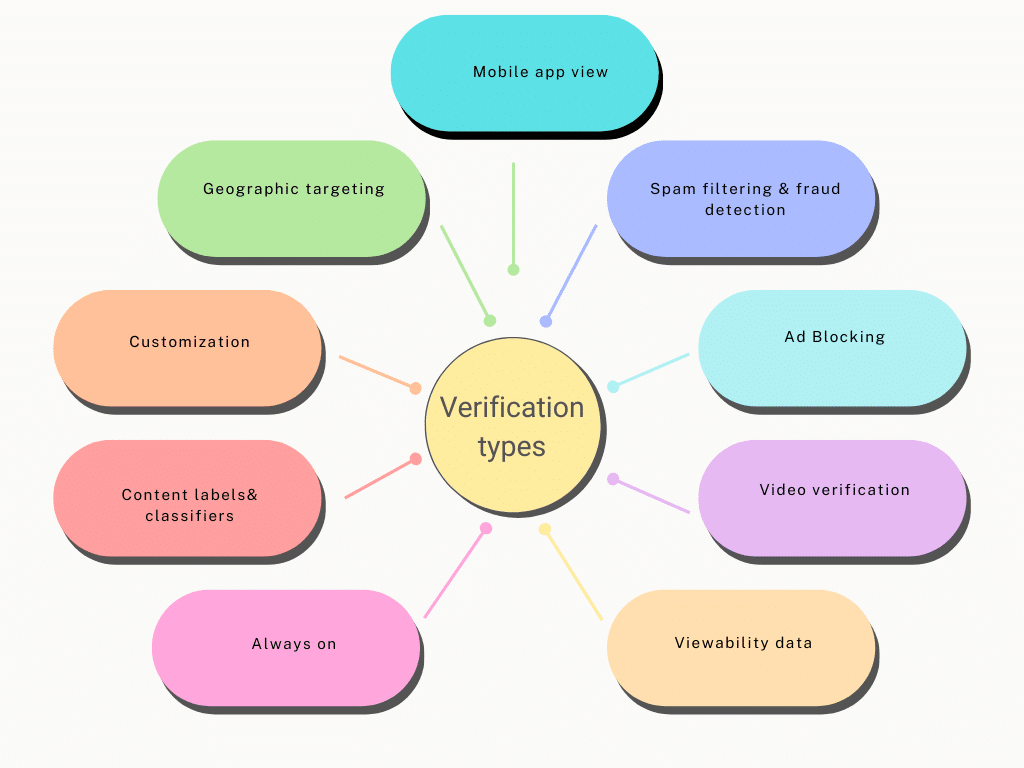Google Verification
Google Verification is a feature that protects the integrity of online advertising by helping marketers serve ads that are tag compliant, display correctly in brand-safe locations, and deliver quality, targeted results.
Different Types of Google Verification
Here are the different types of google verification that you can enable. Source.

Types of Models
Models play well with Google Verification tools. Here are some of the most popular models:
Position-based Model
The position-based model is a hybrid of the last-interaction and first-interaction models. Instead of giving all the credit to either the first or the last interaction, this allows you to split the credit between them. A common scenario is to assign 40% credit each to the first and last interactions and assign the 20% balance to the remaining interactions.
Time Decay Model
The time decay model is appropriate for a sales cycle that involves only a brief consideration phase. It gives the most credit to the touchpoints nearest to the time of conversion or sale. The Time decay model has a half-life of seven days, meaning that a touchpoint seven days before the conversion will get half the credit of a touchpoint on the day of the conversion or sale. Similarly, a touchpoint 14 days before the conversion will get one quarter the credit of a day-of-conversion touchpoint. The exponential decay continues until the end of your lookback window.
Data-Drive Model
The Data-Driven Model trains an attribution model based on your data. Because they’re based on consumer behavior, you’ll benefit from attribution reporting without needing to study the default algorithms or invest in user research. You can create only one data-driven attribution model. Your model needs to train for one to two days and will be grayed out until usable. If you create a new model or make changes to an existing model, the model will need to retrain for another one to two days. Reporting is unavailable for date ranges before a model is trained. Learn more about creating a data-driven attribution model. We at Global Social Media Marketing tend to use the Data-Driven Model because we are all about the data! Data shows facts and evidence that something is working. We want our clients to see evidence of their growth.
Attribution Model
The Attribution Model tool lets you compare up to three attribution models at a time, helping you identify display advertisements that may be over-or undervalued in your current attribution model and adjust your investments accordingly. On top of verifications and models, you can enhance the relevance of the creative messaging by considering the context and moment in which ads are reaching consumers. Make sure you ask yourself these questions:
- What device is the ad being served on — objectives and expectations for mobile vs. desktop?
- Where are they — in the city, in a rural area, near your store?
- What is your ad next to — editorial content, in-app games, what keywords are on the page?
- What time of the day, week, or year is it — will different messages resonate better when someone is on the train to work in the morning, or on their laptop on the sofa in the evenings?
These questions can help you understand more about the people you’re reaching, to engage with them in a more meaningful way. For example:
- What are their interests? Do they love to travel or fitness? Are they thrill-seekers?
- What life stage are they in? Are they just graduating or newly married?
- What age and income bracket do they belong to?
If you’d like to know more about Google Verification and its features, comment below or schedule a FREE consultation with our CEO Benjamin Kepner. You can do that here!

